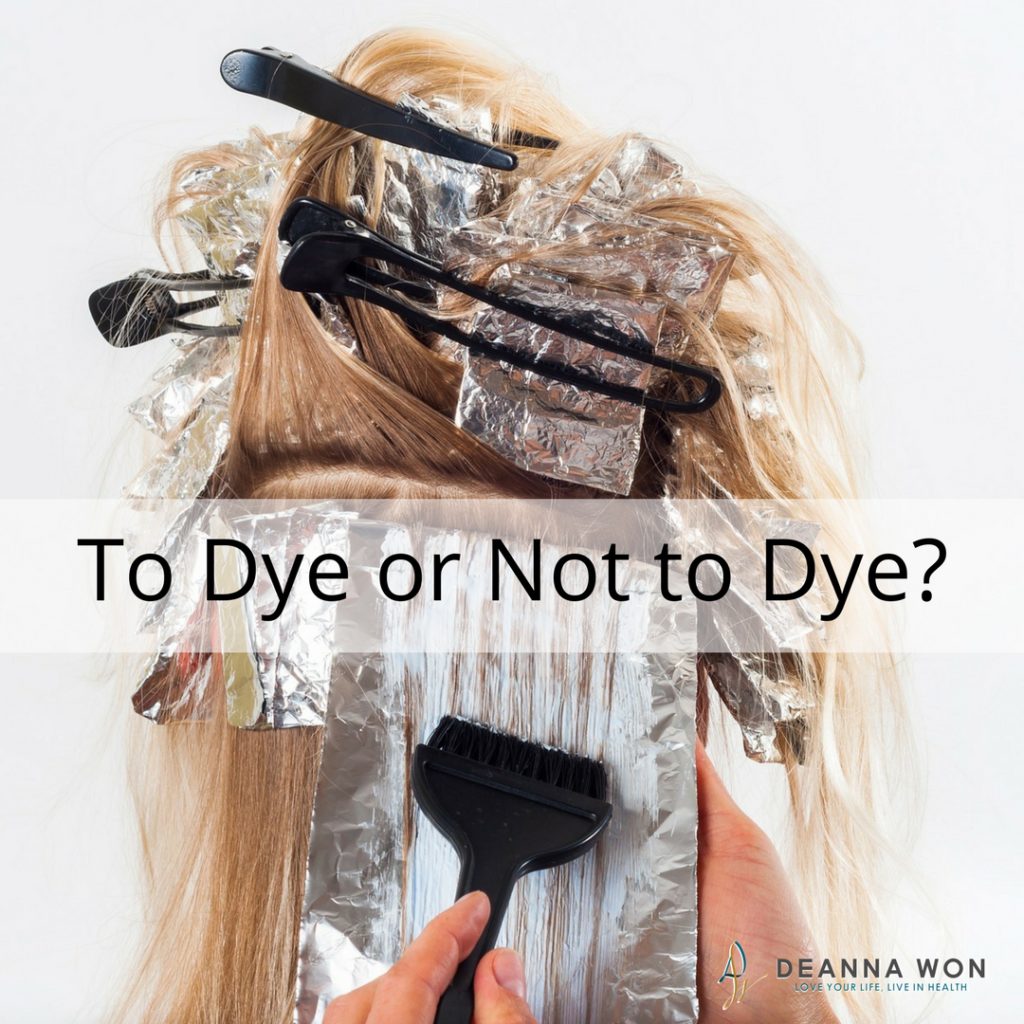To some extent, we all care about what we look like. Every morning, after rising out of bed, we all engage in a personal grooming routine that will make us “presentable” to the rest of the world. As we all want to age gracefully, we sometimes take measures to maintain that recognizable face from our youth. Gray hairs slowly creep into the image that stares back at us in the mirror, letting us, and others, know that we aren’t necessarily the same young whippersnappers from before. In lieu of our youthful appearance and zest, we have gained an abundance of knowledge and experience during our lives up until this point. Although those grays are a badge of honor, some still prefer to cover them up, as if they’re not ready for the world to see them as “older” by dyeing their hair.
For others, the process of hair dyeing is merely a simple process of changing one’s looks, as one changes one’s clothes. We’ve all seen makeover shows where the most dramatic change that gives someone that “wow” factor is the change in hair color, usually going from either light to dark or dark to light.
Coloring our hair is one of the easiest ways to maintain a more youthful appearance or to simply change the way we look for fun. But, can making those changes lead to detrimental effects down the line?
Over the past few years, there have been studies examining the link between cancer and hair dyes. Although people have been coloring their hair since ancient times, our modern commercial hair dyes are riddled with thousands of chemicals that, with frequent use over time, can lead to a plethora of diseases, including cancer.
In a recent study, published June 9, 2017 by the Oxford University Press, carcinogens in hair products were explored as risk factors for breast cancer. This study consisted of African-American and Caucasian women between the ages of 20 and 75. Among the African-American women that used dark hair shades, there was a 51% increased risk of breast cancer. Among Caucasian women that used dark hair dyes, there was a 54% increased risk of breast cancer. But why is the cancer risk so much higher with darker shades of hair dye?
Permanent hair dyes, also known as oxidative hair dyes, cause a long-lasting chemical change in the hair shaft. These dyes contain aromatic amines and phenols that, when mixed with hydrogen peroxide, create a chemical reaction in the hair, causing the change in color. For darker hair shades, there are much more of these substances used in the dyes as darker colors are more difficult to produce.
In order for the desired effect to take place, the hair dye is required to stay on the scalp for a period of 20 to 30 minutes. In that time, the chemicals are able to penetrate the scalp, which contains a rich blood supply, which then allows seepage into the bloodstream. As men and women tend to cover up their new growth in order to match the longer sections of their hair, dyes are typically used on a monthly basis. With this frequent use, these toxins are able to build up in the body and lead to blood cancers such as leukemia and lymphoma, as well as bladder and breast cancers. Additionally, because hairdressers are continuously exposed to these chemicals throughout the day, studies have shown that they are at an increased risk for bladder cancer.
What are some of the chemicals we should be trying to avoid when dyeing our hair?
P-phenylenediamine. You may remember this chemical from my previous article, Dressing for Health. This petroleum-derived chemical, made from coal tar, is primarily used in darker hair colors and includes benzene, naphthalene, aniline, and other chemicals (which are byproducts of coal tar that have been linked to cancer). Alone, PPD is known to be a contact allergen. When combined with hydrogen peroxide, the toxicity level is increased and can lead to cancer.
Aromatic Amines. These are colorless and odorless chemicals that are carcinogenic and mutagenic. In lab tests, these chemicals caused cancer in laboratory animals.
Parabens. This preservative has the same chemical structure as estrogen, and mimic that hormone in the body, producing the growth of cancer cells in breast tissue.
Hydrogen Peroxide. This product, which is normally found in every medicine cabinet, is known to be a cleansing agent for wound care and a bleaching agent for fabrics. In hair dyes, it is used to strip down the natural hair color. When combined with p-phenylenediamine, the effects can be toxic.
Ammonia. If you’ve ever used hair dye, this is the first thing that you smell when you use the product. Sometimes, the fumes alone can cause your eyes and nose to burn. This is used to open up the hair cuticle so that the chemicals can change the color of the natural hair shaft. This can cause burning of the scalp and irritation to the lungs.
Lead Acetate. This carcinogenic inorganic salt, primarily used in hair dyes for men, has been known to cause reproductive issues, causing mutations and birth defects. Lead acetate has been banned in Europe and its use in Canada has been restricted from cosmetic products. In the US, it is only restricted from cosmetics that are used near the eyes.
DMDM Hydantoin. Banned from cosmetics in Japan, this formaldehyde-producing agent, used as a preservative in cosmetics and hair dyes, can cause allergies, insomnia, depression, and chronic fatigue. It can also weaken the immune system and cause cancer.
In our quest to maintain our youthful appearance as long as possible, or even just to make a change, there is good news. There are natural options for hair coloring that exclude all of these toxic ingredients. In your own kitchen, you may have the ingredients needed to create the change that you desire using herbs, flowers, coffee and teas. Although the effects may not last as long as the more toxic options, you will be confident in knowing that you will not be introducing any harmful chemicals into your system.
Your health is far more important than your appearance. If you’re mindful about the foods that you eat, you may want to be just as diligent with your personal grooming products. Living a healthy and happy life is possible when you take steps to avoid unnatural ingredients that can cause harm to your body. Think of it this way–if you can’t pronounce it, or have to look it up to see what the ingredient is, it is most likely an ingredient that doesn’t need to be introduced into your body.
Ready to make your health a priority? Contact me here to schedule your consultation.
Sources:
http://articles.mercola.com/sites/articles/archive/2010/07/13/sodium-lauryl-sulfate.aspx
http://www.dailymail.co.uk/health/article-18662/Hair-dye-cause-cancer–brunettes-greater-risk.html
http://www.naturalhealth365.com/hair-color-2057.html
http://www.beatcancer.org/blog-posts/can-coloring-your-hair-lead-to-cancer
http://www.chrisbeatcancer.com/hair-dyes-and-breast-cancer-what-you-need-to-know/
https://www.cancer.org/cancer/cancer-causes/hair-dyes.html
http://www.theepochtimes.com/n3/2040018-avoid-these-7-toxic-chemicals-found-in-most-hair-dyes/
https://www.ncbi.nlm.nih.gov/pmc/articles/PMC3543291/
http://www.webmd.com/breast-cancer/news/20151027/parabens-breast-cancer#1
https://www.annmariegianni.com/lead-acetate-annmarie-giannis-ingredient-watch-list/
https://www.bewell.com/blog/what-chemicals-should-you-look-out-for-in-your-personal-care-products/

